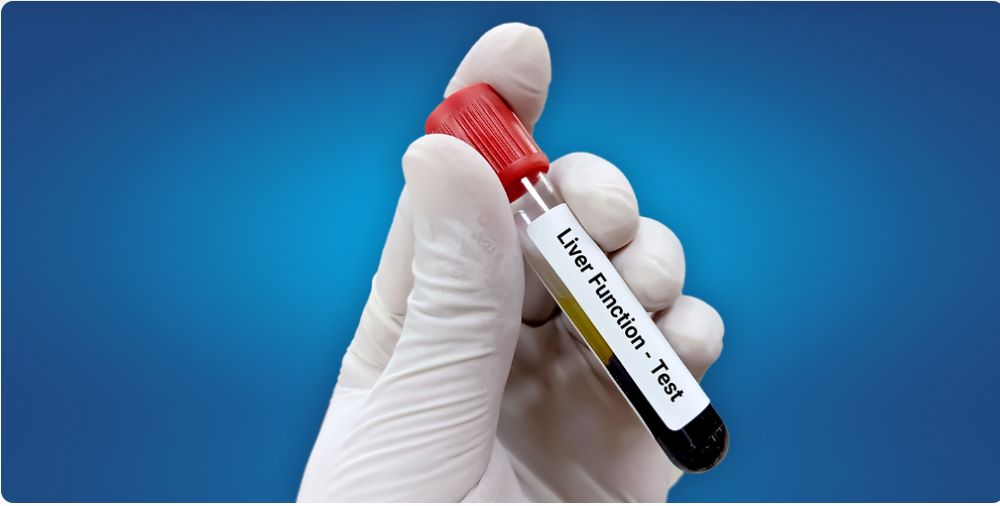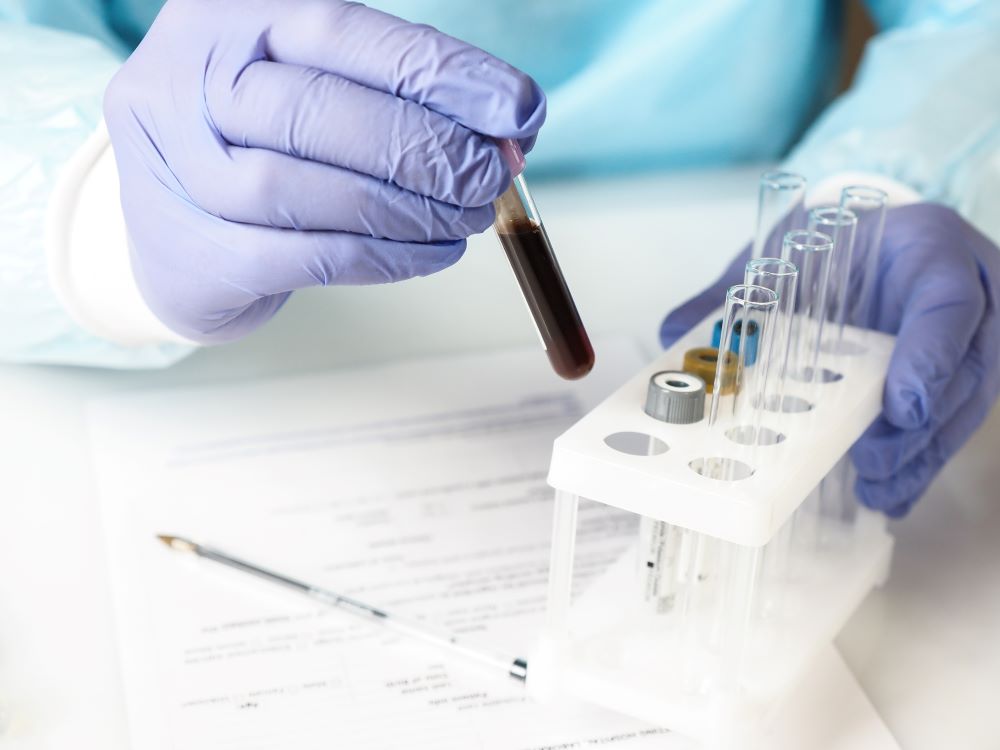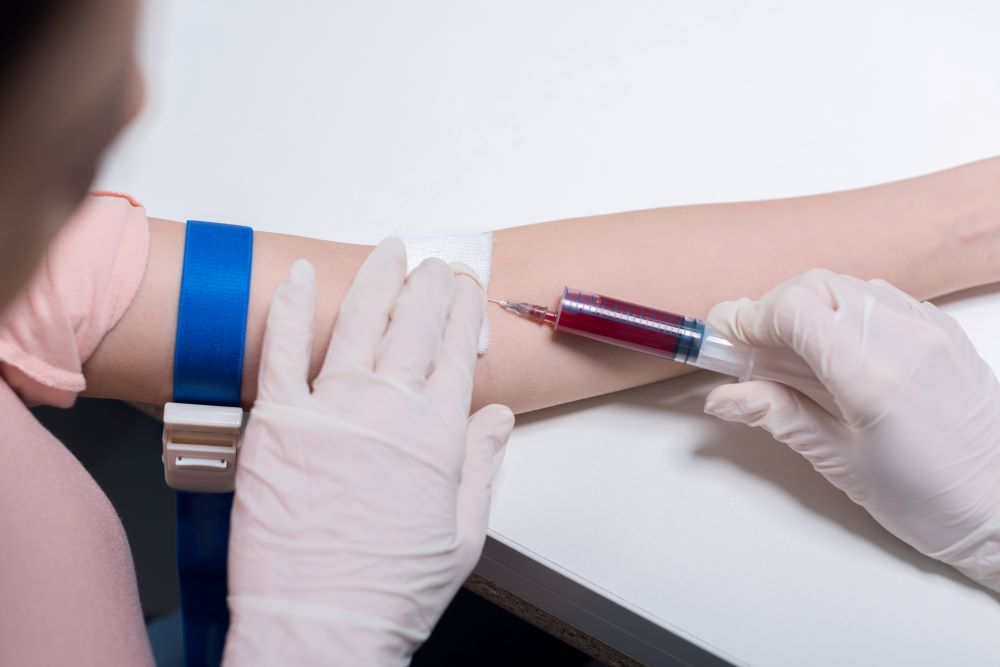What Is ALT in a Blood Test?

The Alanine Aminotransferase (ALT) test is performed to measure the severity of liver damage. In addition, the ALT in blood tests helps to determine the root cause of the liver damage, whether due to any disease, drug or injury.
Alanine Transaminase is an enzyme that is present mainly in the liver and other parts of the body. This enzyme is a natural protein responsible for the smooth flow of liver functions. Therefore, the ALT blood test assesses the level of ALT in the blood as a higher amount of this enzyme indicates possible liver damage.

Table of Contents

What is ALT in Blood Tests?
Alanine transaminase (ALT) is an enzyme primarily located in the liver. The level of ALT in the blood is determined using an ALT test. Damage to the liver causes it to emit ALT into the blood. Elevated ALT levels in your blood could indicate an illness or injury to your liver.
The level of alanine transaminase (ALT) in your blood is determined via a blood test. Healthcare professionals frequently use an ALT blood test to assist in evaluating the health of your liver, which causes elevated ALT levels in the blood to indicate liver disease.
Why is the ALT Test Necessary?
It is essential to know the functions played by this liver enzyme to understand the importance of ALT in blood tests. Aspartate aminotransferase (AST) and alanine aminotransferase (ALT) are the enzymes that make glycogen in the liver. The AST and ALT in blood tests are the two essential factors in the liver function test, which is commonly known as LFT. Doctors recommend this test to identify any of the signs and symptoms mentioned below:
- Measuring the severity of a liver disease
- Understanding when a specified medication will start
- Identifying liver ailment based on symptoms like dark coloured urine, continuous vomiting, fatigue, etc.
- Comprehending response of ongoing liver treatment
What Are the Ways to Measure ALT Count in Blood Test?

The ways to measure the ALT value in blood tests include collecting blood samples using a small test tube or vial by a healthcare professional. The blood is collected through an injection, and individuals might need to fast for a few hours based on the health care provider guidelines.
When Should You Get an ALT Test?

An ALT (alanine aminotransferase) test measures the level of this enzyme in your blood, which can indicate liver health. You might need an ALT test if:
- You have symptoms of liver disease such as jaundice (yellowing of the skin or eyes), abdominal pain, or dark urine.
- You have risk factors for liver disease, such as a history of heavy alcohol use, obesity, or exposure to hepatitis viruses.
- You are taking medications that can affect liver function, and your doctor wants to monitor your liver health.
- Routine health screening, especially if you have conditions like diabetes or high cholesterol, can impact liver function.
Your healthcare provider will decide if you need this test based on your health status and risk factors.
What is the Procedure for the ALT Test?
The ALT (alanine aminotransferase) test is a simple blood test to assess liver health. During the procedure, a healthcare professional will first clean the skin on the inside of your elbow or another area with an antiseptic. Next, they will insert a needle into a vein to draw a small amount of blood, which is then collected into a tube.
The sample is sent to a laboratory for analysis, where the level of ALT in your blood is measured. The process is relatively quick, usually takes just a few minutes, and does not require special preparation. After the test, your healthcare provider will review the results with you and discuss any necessary follow-up actions or treatments based on the findings.
How Should You Prepare for the ALT Test?

Preparing for an ALT (alanine aminotransferase) test generally involves a few straightforward steps. Although fasting is not always required, your healthcare provider might recommend fasting for a few hours before the test, particularly if other liver function tests are also being performed. You must inform your healthcare provider about any medications or supplements you are taking, as some can influence liver enzyme levels.
Avoiding alcohol for at least 24 hours before the test is advisable, as it can affect the results. Ensuring adequate hydration by drinking plenty of water before the test can also make it easier to draw blood. Following these preparatory steps helps in obtaining accurate and reliable test results.
How to Read Results of ALT in a Blood Test?
ALT (alanine aminotransferase) test results are interpreted based on their levels compared to the normal range, usually 7 to 56 units per litre (U/L). Normal levels generally indicate healthy liver function. Elevated ALT levels may suggest liver inflammation or damage from conditions like hepatitis, alcohol abuse, or fatty liver disease.
Low ALT levels are less concerning but can sometimes indicate a vitamin deficiency. To fully understand your results, it's essential to consider them alongside other tests and clinical information, which your healthcare provider will use to assess your liver health.
How to Understand the Ranges of Normal ALT Count?
As per medical terms, the ALT blood test normal range is 7 to 55 units per litre (U/L). In addition to this, the LFT report consists of a few other components and its ranges:
The normal range mentioned above is common for adult men and women. However, it may vary slightly depending on the methods and specific conditions during the test.
What are the Symptoms of High ALT?
If suspected liver damage is the cause of increased alanine transaminase levels, you might have symptoms such as:
If you are troubled by any of these symptoms, you should visit a doctor who will evaluate you properly and get the right treatment done.
What Does a High ALT Count Mean?
As per medical surveys, ALT blood test levels are generally higher in men. Therefore, to understand the severity of liver damage based on ALT in blood tests, the causes of the rise of this liver enzyme have been divided into three groups.
- Slightly High ALT Levels: This is caused due to overconsumption of alcohol, prolonged scarring in the liver, mononucleosis, and overdose of aspirin and sleeping pills.
- Mildly High ALT Levels: This level of ALT in blood tests mostly occurs due to ongoing liver complications; block in bile ducts, heart attack resulting in blood clotting, damage to red blood cells, overconsumption of vitamin A, etc.
- Extreme High ALT Levels: LFT tests show extreme high ALT levels occurring due to viral hepatitis, liver cancer, an overdose of Tylenol drug, etc.
What are the Causes of High ALT Count?
Many factors are causing high blood levels of alanine aminotransferase (ALT), primarily involving the liver. Some of the common causes include the following:
If your ALT levels are higher, you should seek an overall evaluation from a healthcare expert for proper management.
What are the Symptoms of Low ALT?
Reduced heart rate reserve, a shorter stress test duration, a greater resting heart rate, and a lower baseline fitness are all linked to low blood levels of ALT (alanine aminotransferase). Low ALT levels have also been linked to poor outcomes in acute coronary syndrome, IBD, and disease activity, according to other research.
Low ALT (Alanine Aminotransferase) levels typically don’t present with direct symptoms, as ALT is an enzyme primarily involved in liver function and metabolism. However, underlying conditions that cause low ALT might lead to various symptoms. These can include:
If low ALT levels are observed, it’s important to consult a healthcare provider to investigate the underlying cause and related health issues.
What Does a Low ALT Count Mean?
A moderately low ALT in the blood is expected and does not cause major health issues. The cause of low ALT blood test levels could be deficiencies in Vitamin B6, excessive smoking, hormonal replacement therapies or chronic kidney failure.
As per medical science, the extremely low ALT level in blood can instigate occurrence of heart disease and a higher risk of death in the case of elders. That is why doctors recommend keeping ALT levels in check by conducting LFT every 6 to 8 months.
As per medical practitioners, individuals can maintain the level of ALT in blood tests by maintaining a balanced and healthy lifestyle, thereby keeping any liver ailment at bay. Some of the natural methods to keep stable are as follows:
- Drinking coffee
- Exercising regularly to maintain weight
- Increasing folic acid consumption
- Keeping cholesterol at a low rate
- Adding nutritious ingredients to meals
However, it is to keep in mind that consumption of folic acid drugs or any other supplements should be started under medical guidance.
What are the Causes of Low ALT Count?
Low levels of alanine aminotransferase (ALT) are less commonly talked about but can occur because of a few reasons:
If low ALT results are found, the health provider should evaluate the condition of the patient being treated to identify specific treatment or management.
The ALT enzyme is primarily located in the liver. The level of ALT in the blood is determined using an ALT test. Damage to the liver causes it to emit ALT into the blood. Elevated ALT levels in the blood could indicate an illness or injury to the liver. However, it is important to keep in mind that the consumption of folic acid drugs or any other supplements should be started under medical guidance to combat ALT.
Protect What Matters - Explore Other Insurance Options














